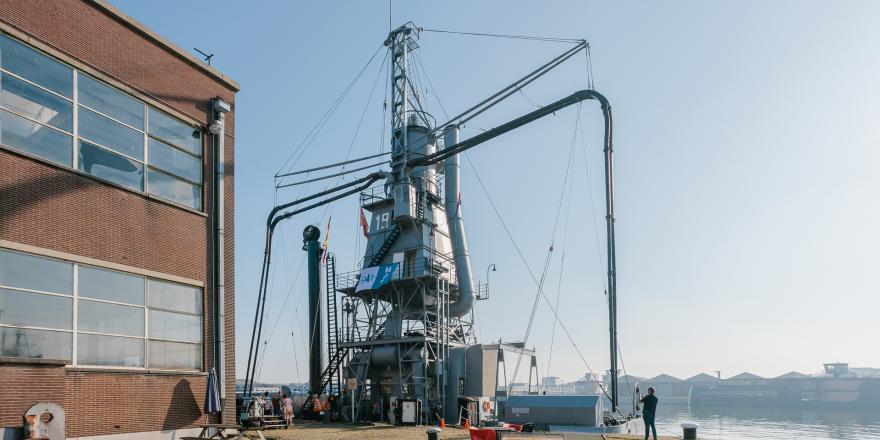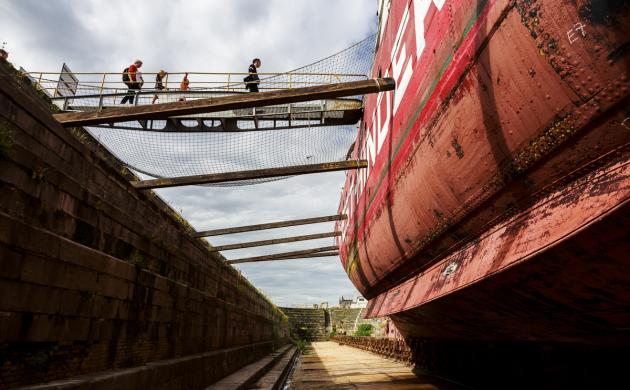With this joint initiative, the MAS and Maritime Museum Rotterdam are setting a European benchmark: two major museums in different countries taking joint responsibility for prime maritime heritage. Because this grain elevator is of enormous significance to both Flanders and the Netherlands.
But... after a 92-year career, even a great machine like the grain elevator starts showing its age. The pontoon, the tower and the electrical systems need restoration work to keep the vessel working and viable for the future. Therefore, the grain elevator will probably stay in Rotterdam for about two years, before returning to Antwerp.
From Antwerp to Rotterdam
The last Antwerp grain elevators were phased out in the 1980s. One of them, number 19, was purchased by the Maritime Museum Rotterdam in 1985. The intention was to dismantle the Antwerp grain elevator and use it for spare parts to restore the last Rotterdam elevator. It soon became apparent that the Antwerp elevator was in better condition and thus grain elevator 19 from Antwerp was preserved as the only operational steam grain elevator in the world.
A team of skilled, motivated volunteers from the Rotterdam Elevator Foundation kept the grain elevator in working condition all this time.
Joint project
In 2015, the Maritime Museum Rotterdam and the MAS submitted a joint project to a Belgian-Dutch foundation for joint management in the future. The VZW Natuurbehoud Pater David manages the estate of Jacques Schoufour (1927-2014), a Rotterdam port baron who lived in Belgium. The foundation granted a starting amount for the restoration of the grain elevator in a joint management project, whereby the grain elevator will be moored 50/50 in Antwerp and Rotterdam.
Symbolic value
The fact that no grain elevator was preserved in Antwerp, and that the last Antwerp specimen was lovingly maintained and regarded as a showpiece abroad, left a bad taste in many Flemish heritage enthusiasts' mouth. Luckily a restoration and exploitation plan has been elaborated by both museums, along with additional partners such as the Hogere Zeevaartschool. The Rotterdam volunteer team also trains the Antwerp MAS volunteers in the operation of this complex machine.
Technical data
- Design: AG Luther, Braunschweig, Germany
- Constructor: John Cockerill shipyard, Hoboken
- Year built: 1926-1927
- Height: 30.45 metres
- Length: 30 metres
- Width: 10.45 metres
- Machine: 275 iPhp two-cylinder compound steam engine



